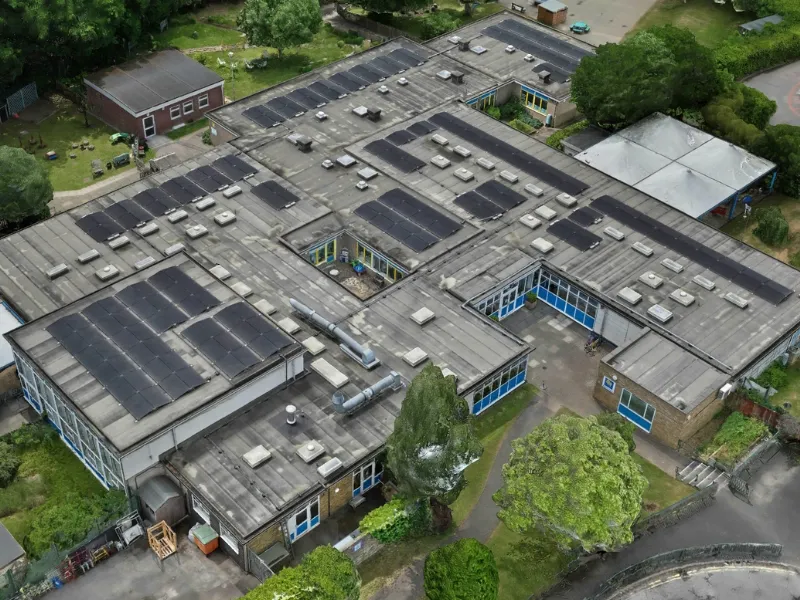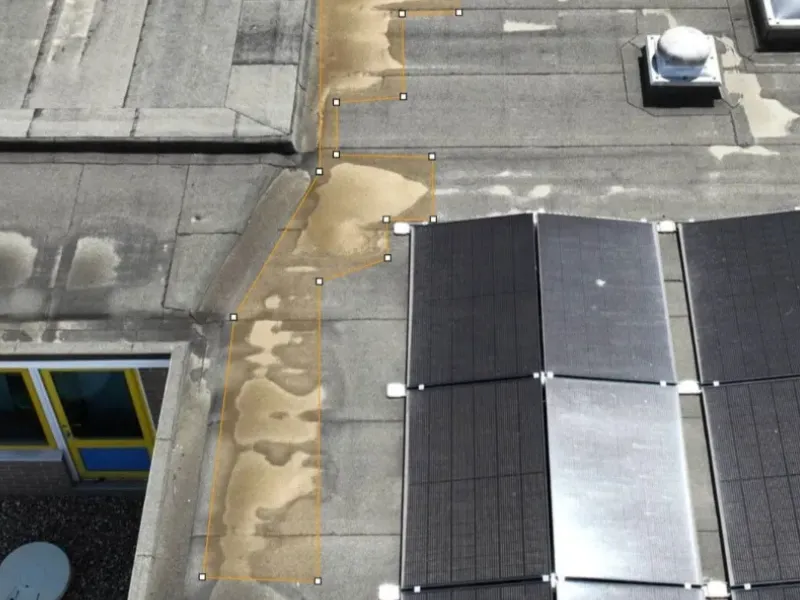
Click to find out more

The UK's public sector faces an unprecedented building maintenance crisis. With budgets stretched thin and a growing backlog of essential repairs, public buildings are deteriorating at an alarming rate. Traditional inspection methods are proving inadequate and slow, but drone technology is emerging as a game-changing solution.
Budget constraints have always been a reality for public sector property management, but the consequences of deferred maintenance are now becoming impossible to ignore. What appears as cost-saving in the short term often multiplies into exponentially higher expenses as minor issues develop into major structural problems.
The delay in addressing maintenance needs has created a dangerous backlog, particularly evident in hospitals where maintenance budgets have increased significantly in the last few years as infrastructure deteriorates beyond routine repair. This reactive approach is not only financially unsustainable but poses serious safety risks.
Public sector buildings present unique inspection challenges. Many are large, complex structures - often mid-rise buildings with intricate rooflines and roof types with hard-to-reach areas impossible to survey comprehensively from ground level. Traditional inspection methods require expensive scaffolding or specialist access teams, making regular assessments prohibitively costly.
Many of these buildings often house critical services where access restrictions make thorough inspections logistically challenging. The result is incomplete or prolonged assessments that miss crucial structural issues until they become emergencies.
The reinforced autoclaved aerated concrete (RAAC) crisis has brought building assessment urgency into sharp focus. Used extensively from the 1950s until production ceased in 1982, RAAC was particularly popular for public sector buildings. Unfortunately, this material has raised concerns since due to its potential for structural failure.
The issue became undeniable when a primary school roof in Kent collapsed in 2018. Subsequently, around 50 hospitals have been identified as at risk due to RAAC components. The material's failure risks are accelerated by moisture ingress and re-roofing with heavier materials that increase structural loading.
Where roofs have been replaced, critical questions arise about material types and whether additional weight exceeds original structural capacity. These concerns highlight the need for comprehensive, regular assessments.
Drone inspections offer an improved approach to building management. These UAVs can safely access every exterior area, capturing high-resolution imagery and 4K video that provides unprecedented structural detail.
For RAAC assessments, drones systematically survey roof structures, identify water ingress signs, and document concrete condition without risking inspection teams. Thermal imaging detects moisture penetration invisible to the naked eye, while geo-referenced data creates accurate monitoring and repair records.
This drone technology transforms inspection from periodic, expensive exercises into affordable, regular monitoring systems. This shift from reactive to proactive maintenance identifies issues before they become critical, saving costs while ensuring public safety.
While budgets remain constrained, drone inspections represent exceptional value. Drone surveys provide detailed building information across multiple formats while significantly reducing inspection costs when compared with traditional methods. The capability to more frequently monitor building structures enables preventive maintenance that costs significantly less than emergency repairs.
Consider the true cost of structural failure: emergency repairs, building closure, alternative accommodation, legal liabilities, and reputational damage. Regular drone assessments represent essential risk management, not just good practice.
The Challenge: A school required a comprehensive building assessment while following strict safeguarding requirements. Traditional scaffolding methods would be impractical for this school due to its size and costly double-handling required.

The Solution: Vantage UAV conducted a drone survey during half-term using RTK technology and AI-driven processing. Even with holiday clubs operating on-site, the data was efficiently gathered with privacy compliance and safeguarding protocols being rigorously enforced throughout.
The Results:

Key Finding: Overall the building was in good condition, with the inspection identifying several areas of interest including roof debris accumulation, minor facade cracks and evidence of water pooling.
This detailed assessment provided clear maintenance priorities and budget planning data.
Read the full school case study here.
Public sector contracts increasingly require organisations to demonstrate sustainability initiatives and social value contributions, including local employment and community engagement. Building assessments must now consider not just structural integrity, but environmental impact and long-term sustainability.
Drone inspections directly support these sustainability goals by enabling precise, targeted maintenance rather than large, unnecessary replacements, extending building lifecycles and reducing waste. The technology eliminates heavy machinery and multiple site visits, significantly reducing the carbon footprint of assessments.
Detailed drone data supports informed decision-making about energy efficiency improvements and renewable energy installations. Thermal imaging identifies heat loss areas, while roof surveys assess solar panel suitability - crucial for the public sector’s net-zero targets.
The public sector building crisis requires innovative solutions. By enabling comprehensive, regular, and cost-effective building assessments, drones transform maintenance from reactive scrambling into proactive management.
For public sector organisations, the question isn't whether they can afford drone inspections - it's whether they can afford not to implement them. With critical building use at stake and budgets under pressure, drone technology offers a pathway to safer, more sustainable building management.
The future lies in embracing technology that makes comprehensive building assessment both affordable and routine. Drone inspections aren't just changing how we inspect buildings - they're reinventing how we maintain the critical infrastructure serving our communities.
